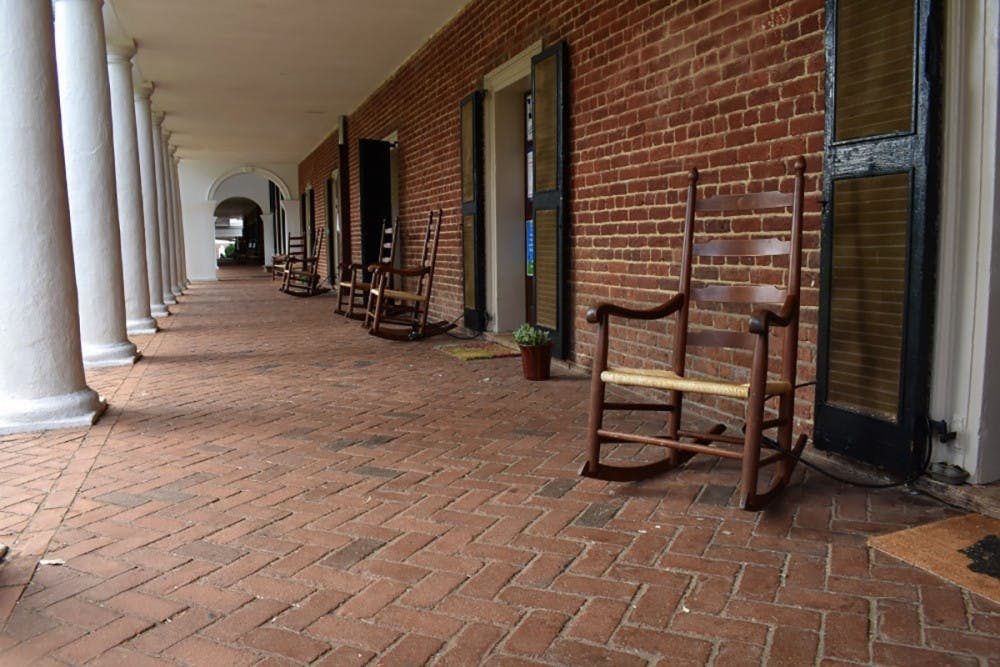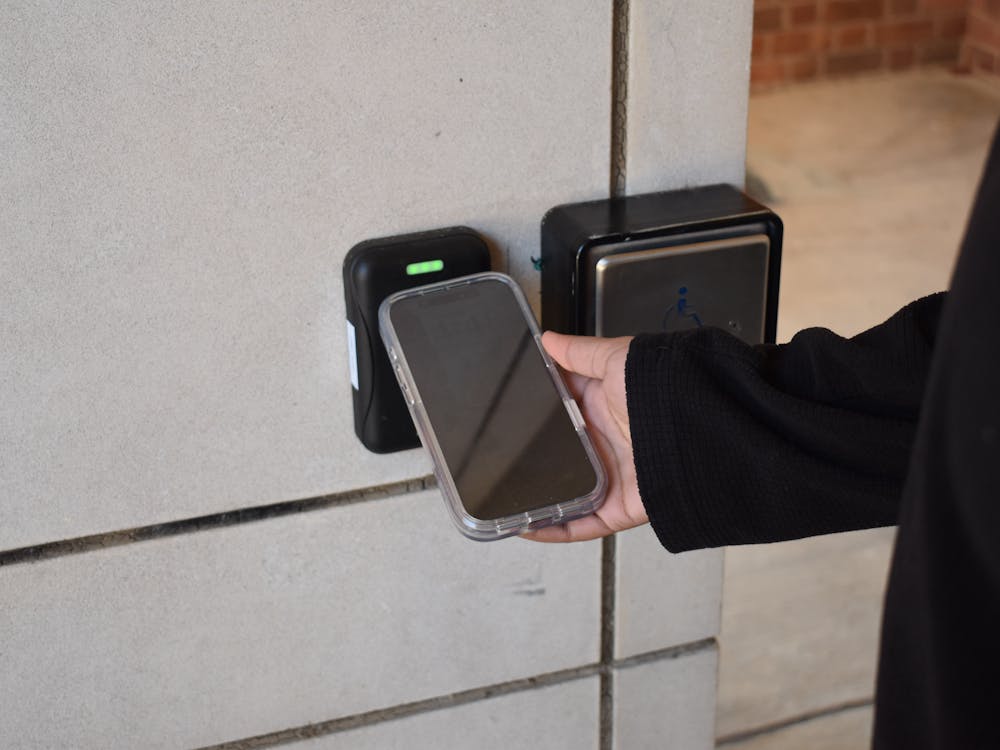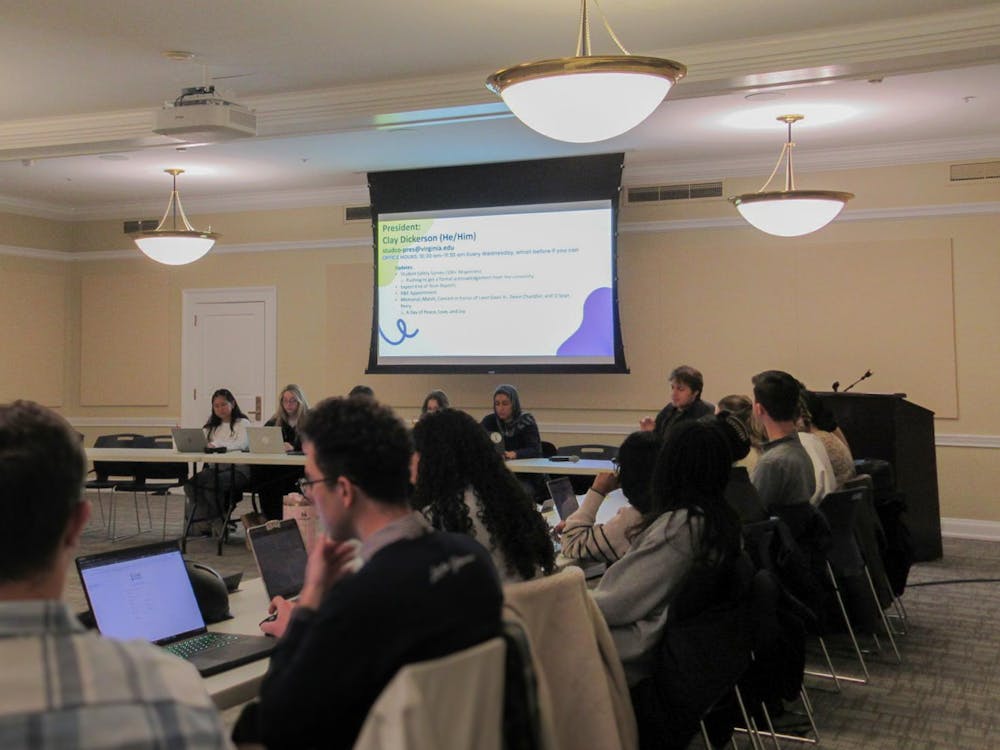The University released its Lawn room acceptances Wednesday for the 2020-2021 school year. 47 students have been selected for Lawn rooms, with seven additional spots set aside for specific organizations and awards. While each selection committee has their own attributes they look for in candidates, they generally value a well-written application essay and demonstrated involvement in the University community from students entering their final year of studies.
Chair of the Lawn Selection Committee Keiara Price, a fourth-year College student, said that a priority of her Committee this year was looking at how applicants participated in the University community rather than looking for particular organizations that are considered to be prestigious.
“You can never say that one is more important than the other,” Price said. “I think you can really gauge how a person is dedicated in their time to the University — one on how they talk about their passions, but also how they've given their energy to them.”
For the first time, a donation from the Seven Society will provide students receiving financial aid with monetary assistance to afford their Lawn rooms this year. The Society’s donation totaled $47,777.77. This donation comes amid ongoing discussions about the high price of a Lawn room — up to $7,520 per academic year — which might dissuade low-income students from applying. Currently, the only option for students who cannot afford Lawn room rent is going to Student Financial Services for assistance.
“We'll never know if someone isn't applying because of needs, because they've never applied — they've not told us that, right?” said Dean of Students Allen Groves, the chair of the Lawn Organizing Committee. “This way, we would certainly have students who might otherwise not have applied now applying, because they believe there wasn't a financial impediment to their being able to live on the Lawn.”
Groves approaches the demographics of Lawn room applicants in three ways — by gender, race and ethnicity and school of enrollment. In his opinion, next year’s Lawn community will represent these demographics well. Of the accepted students, about 28 percent identify as indigenous or people of color, and 57 percent are women.
The Lawn Selection Committee received 221 total applications this year from 117 women and 104 men. The Committee accepted 27 women and 20 men from that pool — marking a 21 percent acceptance rate.
From the 47 accepted students, 32 students identified as white, eight as Asian, five as African American, five as Latinx and two as Native American, while two others chose not to identify. The number of Asian students represented on the Lawn decreased by three, and the number of African American students decreased by two from last year. Latinx and Native American students each have two more students compared to last year’s representation.
Price is generally pleased with the diversity of next year’s Lawn, but she said that she hoped more minority students would have a room next year.
“There's always more work to be done,” Price said. “I am happy with this year that for the most part [minority representation] hasn't decreased … But it is fairly representative.”
Price noted that in order to increase the number of applications from students of under-represented backgrounds, students who live on the Lawn must make an effort to go into the University community and encourage minorities to apply.
“I think a lot more work has to be done as far as going out into marginalized and underrepresented communities and letting them know that this is a space in which they can live and enjoy the community,” Price said.
As for the demographics of academic schools, the College had the most applications and acceptances, with 127 students applying and 31 receiving rooms. Additionally, the acceptees included seven Engineering students, three Batten students, three McIntire students, two Architecture students and one Curry student. Nobody from the Nursing School or School of Continuing Professional Studies received a Lawn room. The median GPA of accepted students is 3.73 and the average GPA is 3.65 — a decrease from last year’s average of 3.76.
Groves noted that he wished that a student from the Nursing school would have received a room. Last year, three Nursing students were offered a room.
“I think the Committee does a good job [in their selection], and we have such talented individuals that apply that there seems to be a pretty good representation,” Groves said. “But, ideally, what we would like is to have every school with at least one person on the Lawn.”
Of the 54 available Lawn rooms, 47 are open to accepted Lawn room residents with five additional rooms set aside for organizations — the Jefferson Literary and Debating Society, Trigon Engineering Society, the Senior Resident of the Lawn, the Honor Committee and Kappa Sigma Fraternity — and two rooms reserved for the Crispell Award and Gus Blagden Award winners.
Groves noted that with just 47 rooms available, it’s impossible for the selection Committee to offer all exceptional applications a Lawn room.
“The fundamental problem is we have far more qualified students than rooms,” Groves said. “So really talented, really qualified people just don't get a room, and it's unfortunate but it's the reality of the scarcity of rooms.”
Price added that she wants to emphasize that to students who did not receive Lawn rooms, their dedication to the University does not go unnoticed.
“For the people that got it — congratulations … and for people that did not — congratulations on all of the work that you have done at this University,” Price said. “If no one else has told you, I am telling you that your work is seen and your work is valued, and it is beyond important, and will continue to impact the student body.”
This year the Committee received just 221 applications, a decrease from 236 applications in 2019 and 282 applications in 2018. Groves recognized the trend of fewer applications and speculates the cause may be that students want to live with friends in their final year or secure a place to live earlier than the Lawn’s Feb. 12 notification. Despite the decline, Groves is not worried.
“I am not concerned by that because I have not seen any decline in the quality of the students selected,” Groves said. “At the end of the day, what we need is a certain number of students who are wonderfully qualified and will make that space a vibrant community. And because we're still getting that — which is the thing that we need for a healthy Lawn — I am not concerned.”
This article has been updated to include input from Keiara Price, Chair of the Lawn Selection Committee.







